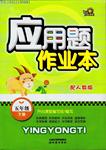题目内容
【题目】The art of paper-cutting in China may date back to the second century, since paper 【1】 (invent) by Cai Lun in the Eastern Han Dynasty in China. As paper became more affordable, paper-cutting became one of the most important 【2】 (type) of Chinese folk art. Later, 【3】 different regions adopting their own cultural styles, this art form spread to other parts of the world. 【4】 (usual), the artworks are made of red paper, as red is associated with 【5】 (happy) in Chinese culture, but other colors are also used.
With 【6】 (it) long history, paper-cutting, 【7】 originated in China, has been very popular among the ordinary Chinese people. People put up papercuts on walls, windows and doors at wedding ceremonies or festivals 【8】(strengthen) the cheerful atmosphere.
Chinese papercuts are rich in content. The auspicious (吉祥的)designs symbolize good luck and the avoidance of evil, The child, lotus (莲花) and bat designs suggest a family with 【9】large number of children and grandchildren. Birds, livestock, fruit, fish and worms are also familiar objects 【10】 (accept) by Chinese farmers. In a word, papercuts used in different occasions have different meanings,
【答案】
【1】was invented
【2】types
【3】with
【4】Usually
【5】happiness
【6】its
【7】which
【8】to strengthen
【9】a
【10】accepted
【解析】本文主要介绍了中国的剪纸艺术。
【1】考查时态语态。时间是东汉,是过去,纸是被发明的,为被动,故填was invented。
【2】考查名词单复数。One of后接复数名词,意为最重要的中国民间艺术种类之一。故填types。
【3】考查介词。此处用with引导的符合结构做独立主格结构,表示原因,因为不同的宗教采用他们自己的文化形式。
【4】考查副词。此处为副词做状语,通常来说,用usually。
【5】考查名词。红色和幸福有关系,介词后接名词,故填happiness。
【6】考查代词。此处填形容词性的物主代词,意为它的,故填its。
【7】考查连词。此处是定语从句,空格所指的意思是paper-cutting,又需充当主语,故用关系代词which。
【8】考查不定式。此处为动词不定式表目的,故填to strengthen
【9】考查冠词。此处为固定短语:a large number of:许多,大量。
【10】考查非谓语动词。此句中已有谓语动词,故填非谓语动词,逻辑主语是前面的名词objects,和accept之间是被动关系,又有关键词by的提示,就更可确定为过去分词,填accepted。

 应用题作业本系列答案
应用题作业本系列答案